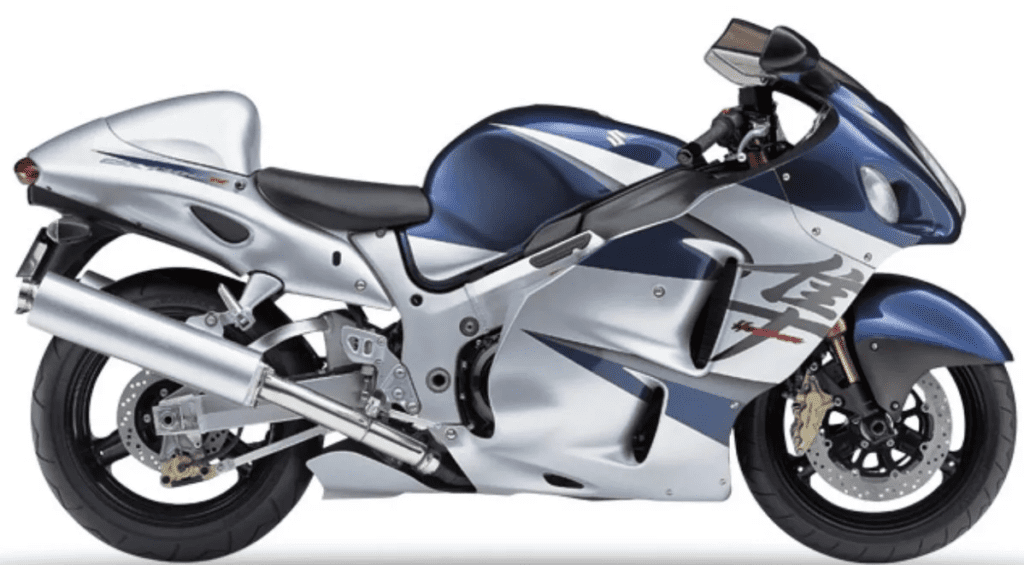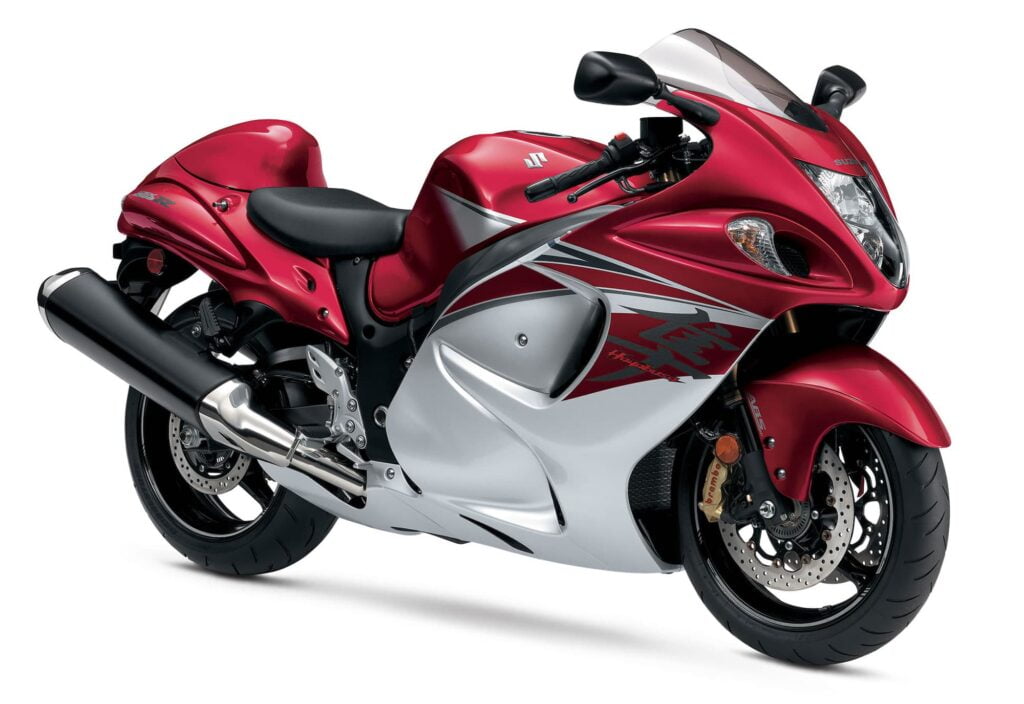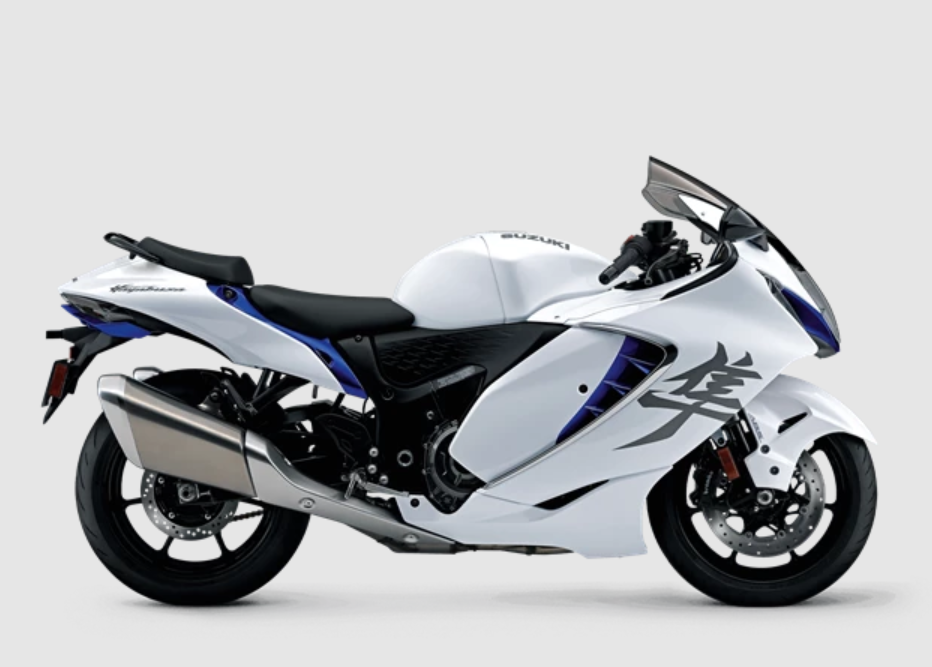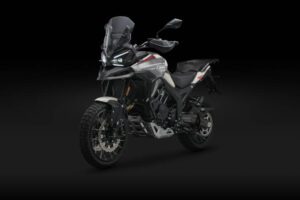Is the Suzuki Hayabusa still the fastest bike of all time?

Image courtesy of Suzuki
A quarter of a century ago Suzuki released a bike that ended one era while beginning another. We take a look at the highlights of the Hayabusa’s history so far, and why this legendary bike continues to be a game changer.
During the 90s many of the big manufacturers were putting significant effort into making their fastest motorcycles even faster. Pushing the limits of engineering to raise the top speed of their superbikes not only gave them a better chance of winning races, but helped to drive sales.
The fastest production motorcycle in 1990, the Kawasaki Ninja ZX-11, could reach an impressive 176mph, quite literally setting the pace for the next decade. The next big milestone was the release of Honda’s CBR1100 Super Blackbird in 1996 which just beat the Ninja with 177mph. Suzuki weren’t going to take this sitting down, and began work on something that would make these impressive, but incremental increases look underachieving.
The Peregrine Falcon is the fastest animal on earth. In its hunting dive it can reach staggering maximum speeds, with 242mph being the fastest ever measured, but on average it travels between 186-200mph.
Its Japanese name is Hayabusa, so when Suzuki were looking for a name for their new bike in 1998, it was the perfect choice. Particularly because they knew their engineers had created something that was going to make everything else look positively slow.
Hayabusa Generation 1
The sweeping lines of the Hayabusa’s fairing are the first sign this bike means business. Designed to reduce drag and turbulence, the 1999 model’s oddly alien curves still look great. While it has evolved since then the overall design, flowing back from the vertical twin headlights mounted in the beak-like cowling, remains fundamentally the same.
But it’s what’s underneath the fairing that really makes the difference. Its 1300cc four-stroke 16-valve liquid cooled engine allowed it to reach a maximum speed of around 194mph. It was easily faster than anything else on the market, and when Kawasaki started dropping hints that it was working on something that would exceed 200mph, European regulators began making noises about putting in legislative limits on the upper speed of motorcycles.
This resulted in the big manufacturers reaching an informal agreement to call an end to the race to constantly one-up the top speed. From 2000 onwards the Hayabusa was electronically limited to the agreed maximum of 186mph, or a round 300kmh.
This means the original 1999 Hayabusa’s are sought after collectors’ items, particularly because the lure of that top speed means that many of them got ridden endlessly, leaving them in somewhat less than premium condition. It’s much easier to find bikes from the 2000-2007 period of the first generation.
Hayabusa Generation 2
 Image courtesy of Suzuki
Image courtesy of Suzuki
The first major revision to the engineering of the Hayabusa came in 2008, in response to the then current Euro 3 emission regulations. Relatively minor tweaks to the engine allowed it to easily meet the new requirements and also deliver more horsepower, while still keeping to the informal agreement.
Of course the thing about these kinds of arrangements is that it’s very difficult to keep everybody marching to the same beat for very long. In 2007 MV Agusta released their F4 with a maximum speed of 193mph. Admittedly they were not one of the European companies that had been involved with the original truce, but once it looks like the arms race might be starting up again it’s only a matter of time…
And indeed in 2009 BMW – who were heavily involved in getting the initial agreement in place – released the S1000RR which had a top speed of 188mph – a token yet significant increase on the previously agreed maximum.
This didn’t put a dampener on the Hayabusa’s popularity, as even with its top speed curtailed it was still a ridiculous bike, manoeuvrable and responsive. 0-60 in 2.6 seconds and a quarter of a mile in 10 seconds or less. When the overall package is this good, who’s going to quibble about a few missing mph at the top end? And if further bragging rights are needed, a heavily modified Hayabusa hit 311mph in 2011, setting a new world-record.
What did put a temporary stop on the fun, at least in Europe, was the introduction of Euro 4 regulations in 2017. When the two-year grace period ran out in 2019, with no compliant engine ready to be swapped out for the old bike, Suzuki decided to withdraw the second generation of Hayabusa from sale in European countries.
Hayabusa Generation 3
 Image courtesy of Suzuki
Image courtesy of Suzuki
That’s not the end of the story, though, as Suzuki had already decided to leapfrog over Euro 4 straight to Euro 5. The third generation of Hayabusa was launched in 2021.
While it’s still got the same basic engine the new emission requirements mean there’s marginally less power and very slightly lower torque, but it’s still more than capable of hitting 186mph without breaking a sweat.
Its fairing has been redesigned to incorporate sharper lines, moving away from the rounded look of the 1999 original, while still retaining the same silhouette and enabling excellent aerodynamic performance.
With the rest of the technical improvements that have been crammed into it, the latest Hayabusa is a worthy successor to the legacy its predecessors created.
Looking for motorcycle insurance?
Whatever your machine, make sure you get the right insurance for you and your bike. That’s where Bikesure can help. As a specialist motorcycle insurance broker, we compare quotes to find you the right policy for your personal needs.
Give us a call on 0800 369 8580 or book a callback at a time that suits you.






